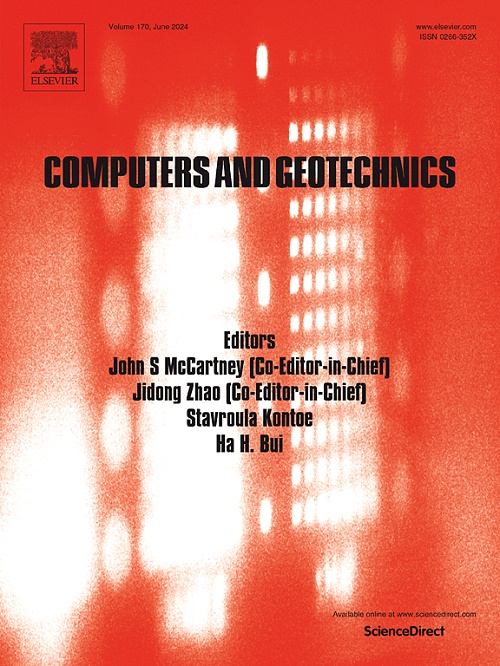2D orthogonal simulation method for multi-physics field evolution in material-structure heterogeneous rocks under microwave irradiation
IF 5.3
1区 工程技术
Q1 COMPUTER SCIENCE, INTERDISCIPLINARY APPLICATIONS
引用次数: 0
Abstract
Due to the significant physical property differences among various diagenetic minerals, it is crucial to characterize the multi-physics field evolution process of microwaves in heterogeneous rocks. To overcome the issues of insufficient refinement in existing numerical studies, this paper proposes a two-dimensional (2D) orthogonal model considering structural-material heterogeneous rocks for the detailed simulation of the strong coupling process of microwave radiation in rocks. Based on a high-fidelity granite model with texture structure, a strong coupled numerical simulation method is developed from both section and facade perspectives. Furthermore, the electrical-thermal-stress-damage physical responses of rocks to microwave radiation are meticulously calculated. The results indicate that both the section model and the facade model exhibit a stress distribution with central compression and surrounding tension, while the damage evolves from the inside out and from the surface inward, respectively. The change in the proportion of the tensile zone and the transformation of the stress properties of the mineral are the response characteristics of damage. The order of mineral damage is biotite, feldspar and quartz, with damage more likely to occur in the feldspar phase. Additionally, the texture structure and physical property differences in heterogeneous rocks are the main driving forces to rock damage. This study provides a novel simulation method for the microwave interaction with rocks and offers new insights into the evolution of multi-physics fields.
求助全文
约1分钟内获得全文
求助全文
来源期刊

Computers and Geotechnics
地学-地球科学综合
CiteScore
9.10
自引率
15.10%
发文量
438
审稿时长
45 days
期刊介绍:
The use of computers is firmly established in geotechnical engineering and continues to grow rapidly in both engineering practice and academe. The development of advanced numerical techniques and constitutive modeling, in conjunction with rapid developments in computer hardware, enables problems to be tackled that were unthinkable even a few years ago. Computers and Geotechnics provides an up-to-date reference for engineers and researchers engaged in computer aided analysis and research in geotechnical engineering. The journal is intended for an expeditious dissemination of advanced computer applications across a broad range of geotechnical topics. Contributions on advances in numerical algorithms, computer implementation of new constitutive models and probabilistic methods are especially encouraged.
 求助内容:
求助内容: 应助结果提醒方式:
应助结果提醒方式:


